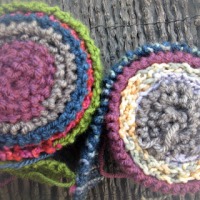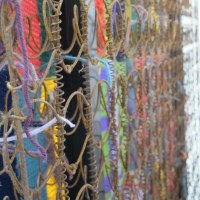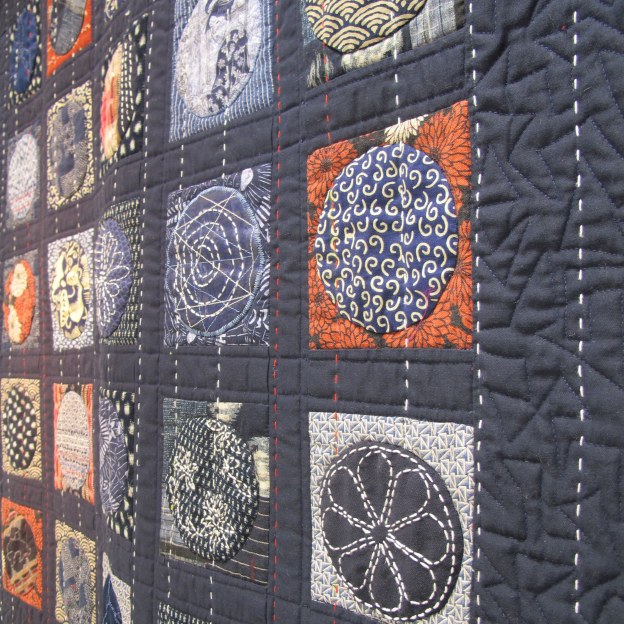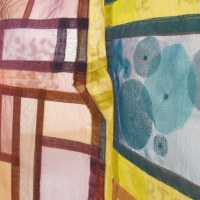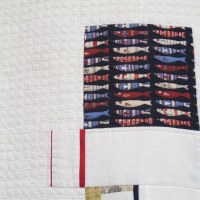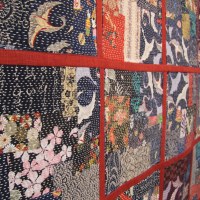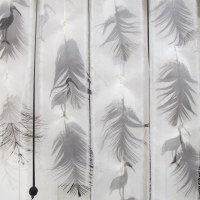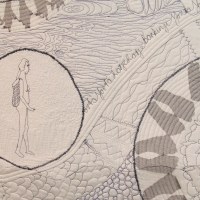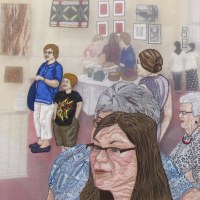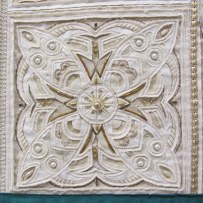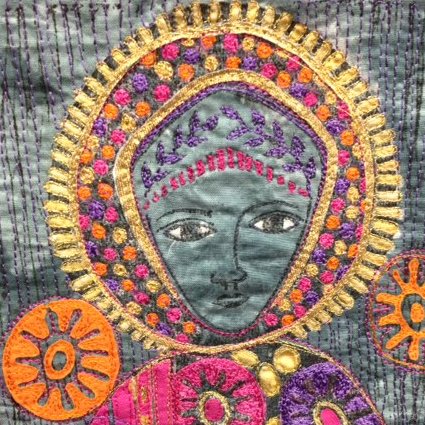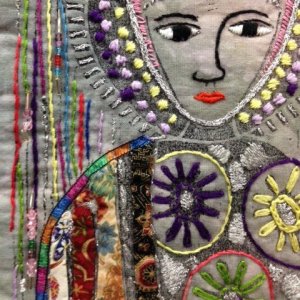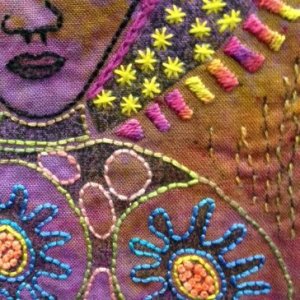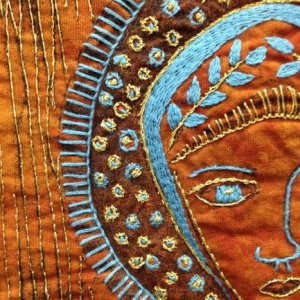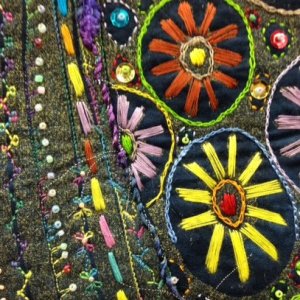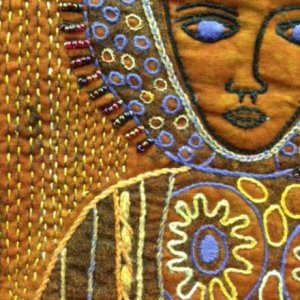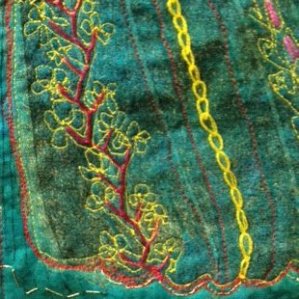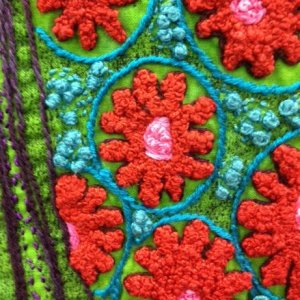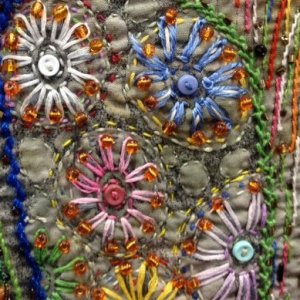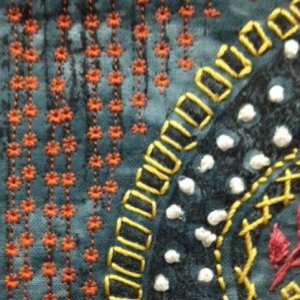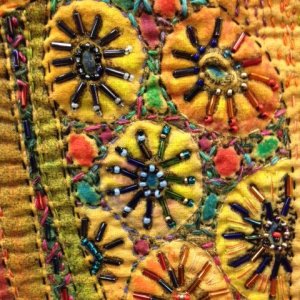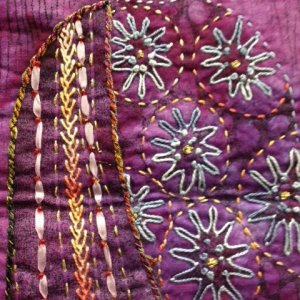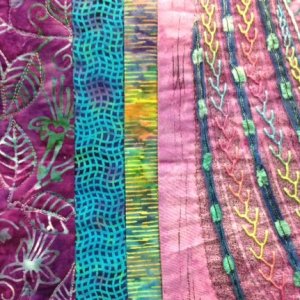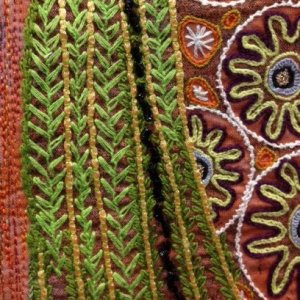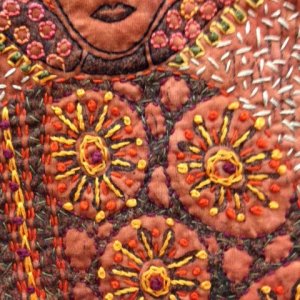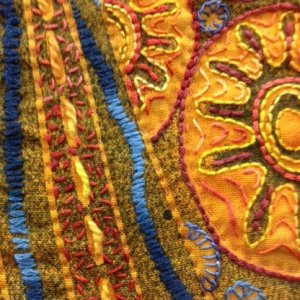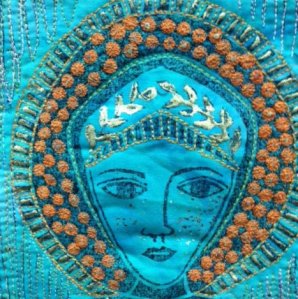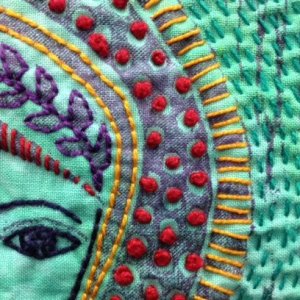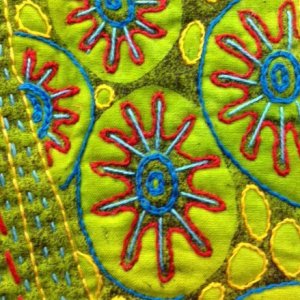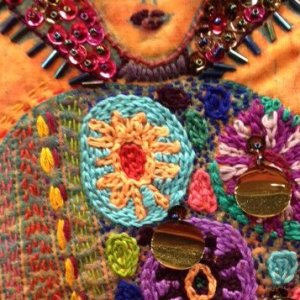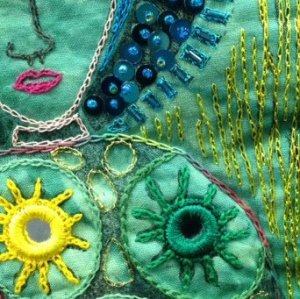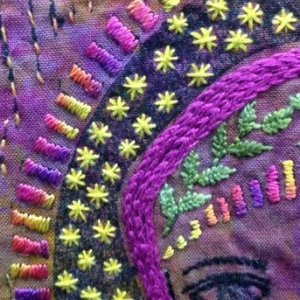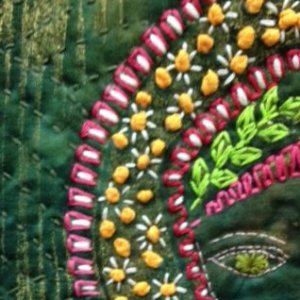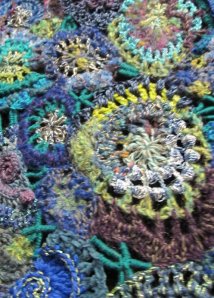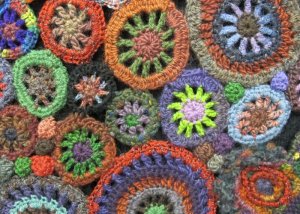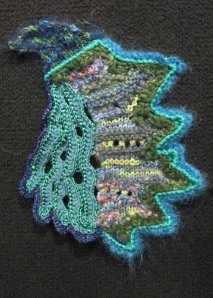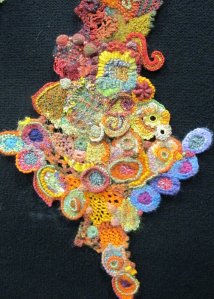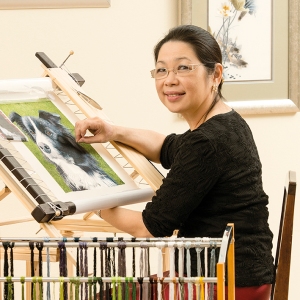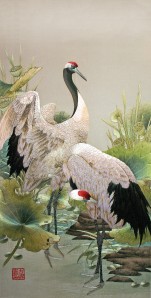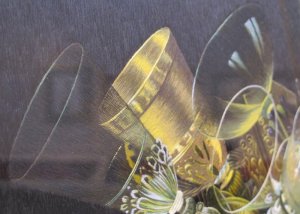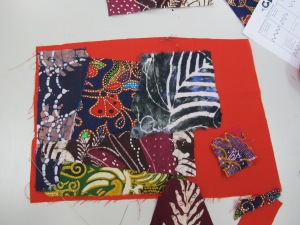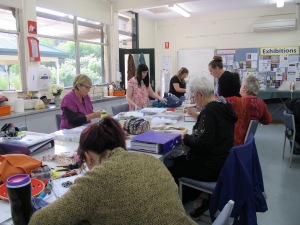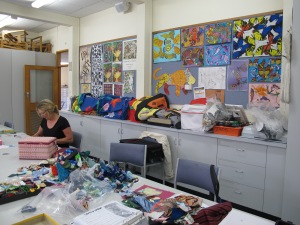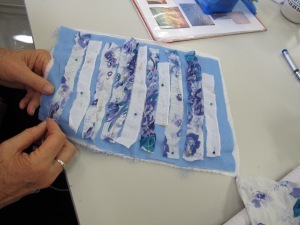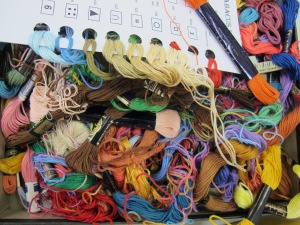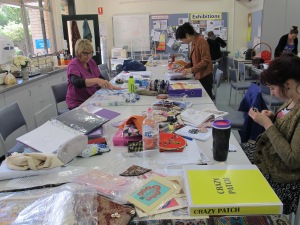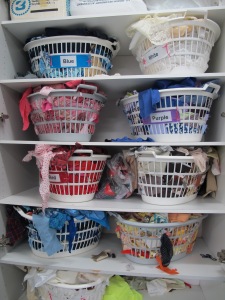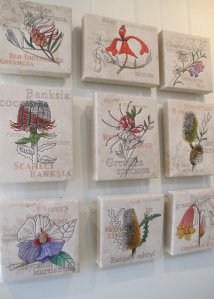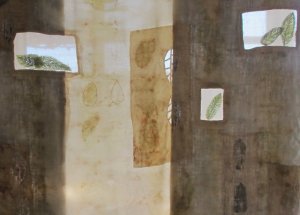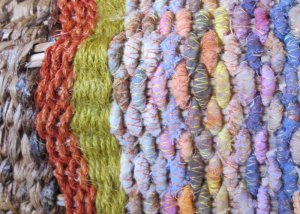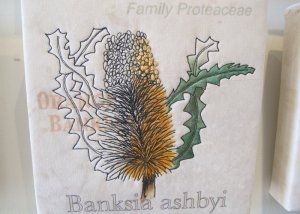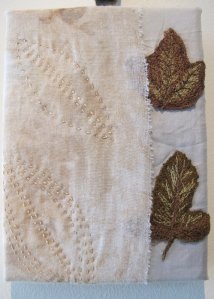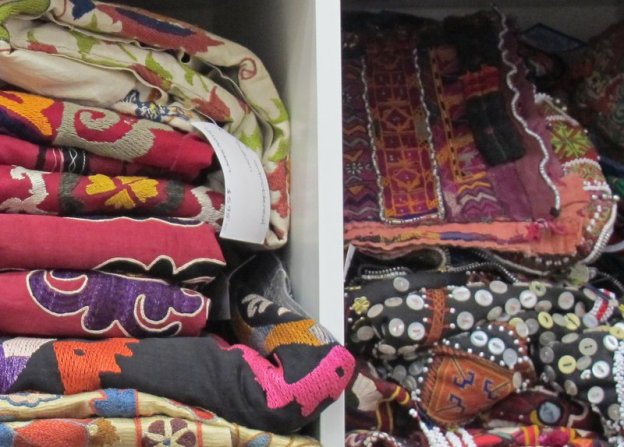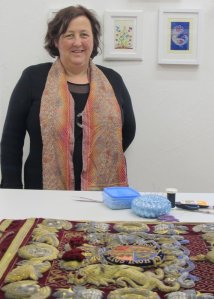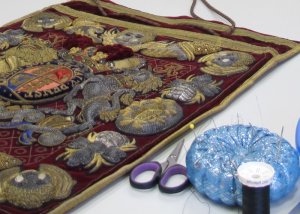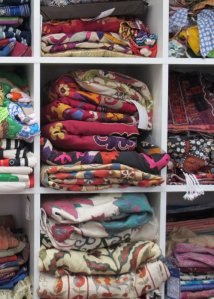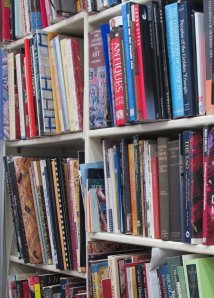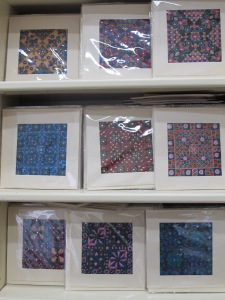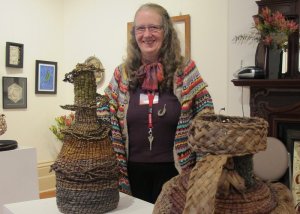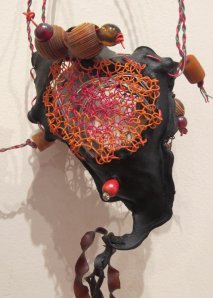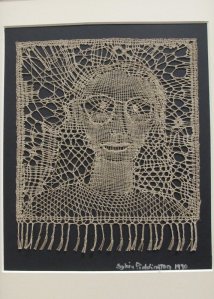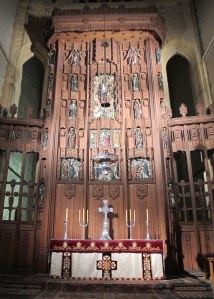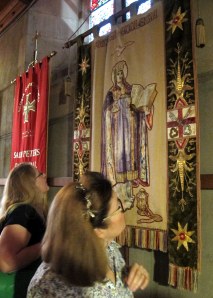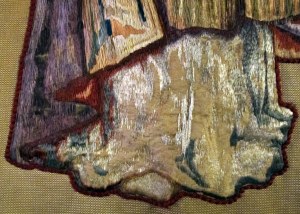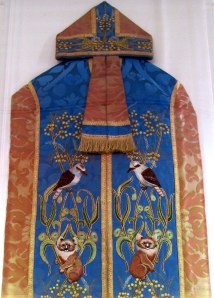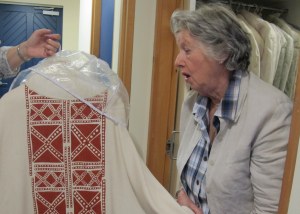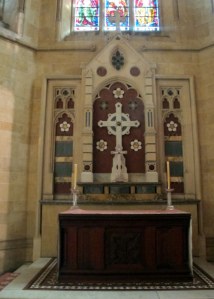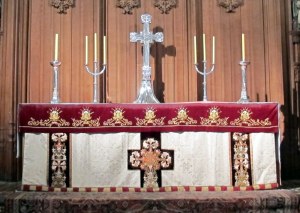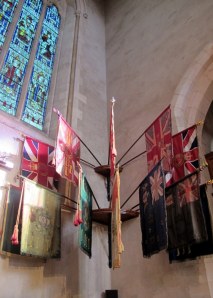This is the story of my entry into Dare to Differ 2015.
THE MARRIAGE BED
My kombers en jou matras en …*
(My blanket and your mattress and …)
*Part lyrics from an old Afrikaans folk song
When we got married, most of our furniture were hand-me-downs from our respective childhood homes. Our bed, however, was brand new. The first piece of furniture we bought as a couple – a symbol of two lives becoming one and a place where we could dream and plan a future together.
The bed served us well for 15 years and even came with us when we moved to different countries. It was our refuge where we escaped the world, where we felt saved and loved, and the cradle where our family was conceived and cared for.
When it was time to replace the bed, I saved the frame and started working on the blanket, using yarn from my stash collected over the years from different parts of the world. They all represent a time and a place where we shared our lives. The blanket and the mattress are made separately and then stitched together in such a way that it cannot be separated again without destroying the whole thing.
THE MARRIAGE BED represents our marriage. Two separate entities becoming one. Each one with different characteristics and different values, which when put together cannot be taken apart again. The one provides strength and support, the other provides warmth and safety. Together they create a home and a family.
The lyrics come from our childhood, they don’t define us, but they anchor us. They make us belong.
As with any marriage, this one is not perfect. Dropped stitches, tension variations, messy colour changes, wires poking through in odd places, and loose ends – mostly hidden out of sight but still there. Looking closely you will see many flaws, but standing back, you will see a harmony of colour, the words will become clear and make sense, the structure will be strong and organised, and the threads will hold it all together.
****************
This project started way back in 2011. At that stage, we were living in Dubai and had just bought a new bed. I had a vague idea of what I wanted to make, or rather what I wanted to say, but had no fixed plan of how to go about it. I knew it had to involve the mattress frame and a knitted blanket. The snippet of lyrics served as the inspiration.
The plan I came up with eventually meant I had to knit the blanket in strips, weave it through the mattress springs and then stitch it together through the wire afterwards. It was the only way to get the knitting inside the steel springs. It took a bit of trial and error to get the right dimensions for the blocks and strips, which I then used to draw up a pattern and eventually a graph for each letter.
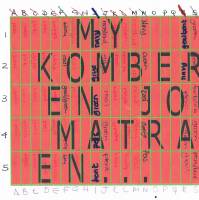 The blocks are 16 stitches wide by 80 rows long. Five blocks in a strip, times 24 strips. I started out with the blank strips at the side, using different stitch patterns, but I soon realised that it won’t work once I start the intarsia knitting for the letters, so I kept most blocks in plain stitch.
The blocks are 16 stitches wide by 80 rows long. Five blocks in a strip, times 24 strips. I started out with the blank strips at the side, using different stitch patterns, but I soon realised that it won’t work once I start the intarsia knitting for the letters, so I kept most blocks in plain stitch.
I used the yarn that I had, adding as I needed or ran out of colours. The plan was not to plan. My only guide was that the whole letter, which spans three blocks, had to be in the same colour and to not have two similar colours next to each other. I used different thicknesses of yarn but the same needles throughout, which means the tension differs, but I think that is quite appropriate for a marriage!
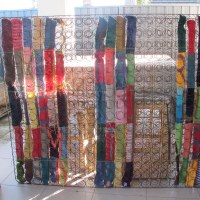 I knitted over time with periods in between when I didn’t do anything. My dear husband patiently allowed me to have the mattress frame packed and shipped with the rest of our household when we moved to Australia in 2012. I have no idea what the packers thought when they had to wrap it up in bubble wrap and load it into the container to ship across the Indian Ocean…
I knitted over time with periods in between when I didn’t do anything. My dear husband patiently allowed me to have the mattress frame packed and shipped with the rest of our household when we moved to Australia in 2012. I have no idea what the packers thought when they had to wrap it up in bubble wrap and load it into the container to ship across the Indian Ocean…
The knitting was coming along well but was still separate from the mattress when earlier this year I decided to force a deadline on myself, just to get it done. My mind wouldn’t allow me to start anything else before this one was out of my system, so I decided to submit it for the Dare to Differ exhibition. Now I had something to work for, and even if it wasn’t chosen it would still be finished.
Putting the knitting and the wire frame together took less time than I thought. It was a bit tricky at times to get my hand in between the wires and I had several scratches on my hands and wrists by the time I was done.
My husband made the stand which I think came out really good and goes well with the rest of the work. I like the big bold wooden bases and the fact that the steel supports are almost invisible.
So there we are – a marriage bed with a story.
What will I do next?


